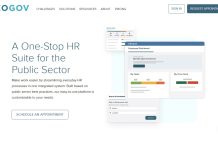Training is a very important component of human resource management. It helps individuals in becoming more competent by acquiring new skills and knowledge. Thus, achieving company goals quicker.
When one thinks about training, he/she may imagine a huge classroom with whiteboards and projectors on the wall, desks, and chairs placed on the floor; new hires spreading high energies all across the room, and instructors waiting for the class to settle down.
But rapid digitization and penetration of internet connections in remote areas have shifted classrooms from offices to employees’ homes. Organizations have begun setting up digital boot camps to train employees in a digital environment effectively and efficiently.
But there are certain myths and misconceptions surrounding digital boot camps that are preventing many organizations from experiencing the benefits of this new way of providing training.
In this article, we will bust all the myths and misconceptions about digital boot camps and tell you why you need to start your own digital boot camp for your employees.
Myth 1: You need to learn everything on your own
This is the biggest myth about digital boot camps. Learners think that during online training they’ll have to learn everything on their own, that there is nobody to guide them and no one to address their doubts or questions.
However, this isn’t true. Digital boot camps offer self-directed learning where one can learn at his/her own pace. They can start studying at any time and anywhere. All the eLearning resources are stored in the central repository that the employees can access at any time. There are pre-recorded videos and audios that one can refer to. Live online classes are also taken up by eLearning professionals.
Just like on-the-job training, employees can reach out to their instructors in case of any doubt or question that they encounter.
Myth 2: Setting up digital boot camps requires a huge investment
Many organizations step back thinking a lot of investment in hardware and software will be needed to establish one’s digital boot camp. Employees may also think that they’re expected to have their own software and hardware, and hence, the prospect of spending extra on training may prevent them from entering into digital boot camps.
The basic requirement for a digital boot camp is the Learning Management System (LMS). The LMS is a web-based tool or software that facilitates online learning. Today, the eLearning market is flooded with a range of free as well as paid LMS software. You can pick any of them based on your budget, and need.
Employees don’t need to spend on hardware or software. A digital boot camp provides a cloud-based, virtual environment so they can access all of the processing power and software tools they need via the online platform.
Myth 3: Digital boot camps leave employees isolated
During on-the-job training, employees get a lively environment where they can interact with their colleagues, team managers, eLearning professionals, and seniors. There is no room for boredom and isolation from the real world.
Since in digital boot camps, employees are trained at their homes without one-on-one facial or physical interaction, many people think that it may leave employees isolated. But that’s not true.
You can use technology to speak, write, and see your global colleagues or eLearning professionals. Technology doesn’t isolate, but rather brings people together by building roads for deeper connection, collaboration, and communication.
You can leverage social learning tools like discussion forums, personal chat rooms, online learning communities, web conferencing, etc, to enable interaction among employees.
Myth 4: Digital boot camps are boring
What made on-the-job training exciting was that employees had a chance to interact with each other. They had the opportunity to play and hang out during their free time. In digital boot camps, there is no scope for playful and fun activities. Online learners have to simply attend their training sessions and listen to their online instructors attentively.
Well, the truth is that digital boot camps are not boring, but rather more engrossing and thrilling. Here is a list of activities that make digital boot camps amusing and entertaining:
- Small five-minute quiz-based games create healthy competition among employees.
- Course-oriented mini-games can be designed so that learners complete eLearning courses on time. For instance, an online scavenger hunt is apt for training hotel staff.
- Online hackathons can be conducted to test employees’ knowledge.
LMS with gamification features is best for employee training using digital boot camps. Employees can be rewarded with coins, badges, trophies, and points.
Myth 5: Online training certificate is not valid
Initially, many employers were wary about online training certificates, especially in the health and education sectors. But the rising popularity of digital boot camps and subsequent EdTech boom has led to widespread acceptance of online training certificates.
As more and more industries are shifting toward online training, the stigma against digital boot camps and online certifications is loosening. Now that eLearning professionals and senior managers are upskilling themselves through online training, digital boot camps have gained more respect and recognition.
Myth 6: Digital boot camp is all about lecturing online learners
This is the most common myth about digital boot camps. Many believe that, in digital boot camps, employees are passive learners as they’ve to listen to their online instructor carefully and take notes.
The truth is, that digital boot camp goes beyond lecturing and provides employees with assignments and projects that keep them engaged. Such assignments and projects test the ability, creativity, critical thinking, and understanding of employees from time to time. They also give your employees an opportunity to demonstrate their talent and apply their skills in real-world situations.
Myth 7: Online learners have to always sit at their work desk
Sitting at a work desk with a laptop or computer switched on can cause digital fatigue. It can strain the eyes and cause pain in the back. This is what makes many run away from digital boot camps.
But now many LMS come with mobile learning features that allow employees to learn easily through a mobile device. They don’t have to sit at their workstation all the time. They simply can log in to their accounts using their smartphones and access all the eLearning materials. Digital boot camps offer flexibility and convenience to employees, making them the best method to train employees.
Myth 8: You have to be a tech whiz to take eLearning courses
Operating an eLearning platform is no rocket science. It is as simple as ordering your favorite mixed sauce pasta or a double cheese pizza with a few simple taps on the screen.
The user-friendly design with intuitive UI makes it easy to navigate and browse eLearning courses. Today, many industries have started building special apps for training employees with disabilities. Hence, one need not be a tech whiz to take eLearning courses.
Conclusion-
From the above discussion, it is very clear that the myths and misconceptions surrounding digital boot camps are misleading and don’t reflect the true reality. On the other hand, digital boot camps offer enormous benefits over traditional modes of training which are completely unavoidable.
Remember, the success of your digital boot camp is determined by the LMS you’ve deployed. Make sure you pick an LMS that provides modern features like mobile learning, social learning, gamification, automated feedback, etc.



